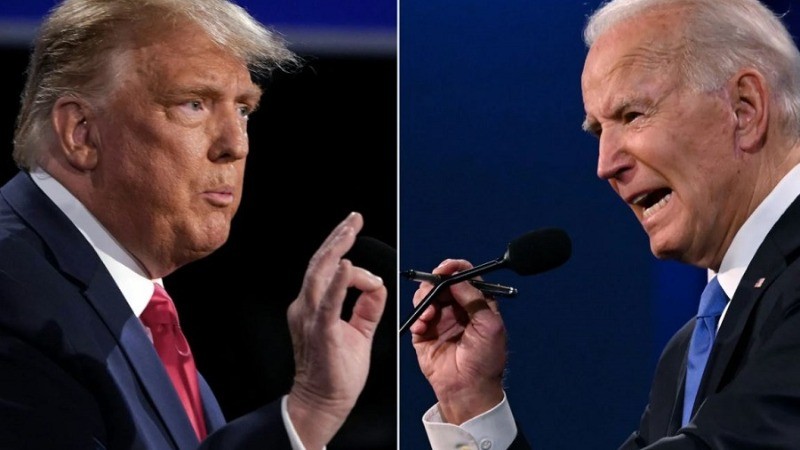
Under President Joe Biden, the U.S. economy has experienced stronger growth compared to the previous administration led by Donald Trump. Since Biden took office, the real gross domestic product (GDP) has increased at an annualized rate of 3.1%. In contrast, during Trump's presidency, the GDP growth rate stood at 2.1%. This stark difference highlights a significant change in economic performance, though it's essential to note that these figures are subject to revisions by the U.S. Bureau of Economic Analysis.
However, this comparison comes with caveats, primarily due to the COVID-19 pandemic's impact on the economy during Trump's final year in office. The pandemic created a significant downturn that affected GDP figures, while the subsequent recovery in Biden's early tenure contributed to the higher growth rates. To better understand this, it can be helpful to assess growth over periods that exclude the pandemic's effects.
After discussing this topic, many readers suggested adjusting growth figures based on the stimulus measures enacted during both presidencies. This feedback implied that the current growth under Biden might be primarily driven by government stimulus rather than genuine economic strength. In response, I've examined the effects of fiscal and monetary policies on GDP growth.
My analysis indicates that during Trump's time in office, the U.S. economy received more substantial support from fiscal and monetary policies compared to Biden's administration thus far. While much of Trump's support was a response to the pandemic, when comparing pre-pandemic conditions with recent trends under Biden, the fiscal environment looks different.
Looking specifically at fiscal policy, the average federal deficit under Trump was higher, averaging 7.7% of GDP compared to Biden's 6.3%. However, just before the pandemic, Trump's deficits were smaller than Biden's current figures, with Trump at 4.6% and Biden at 6.1%. The critical factor is not just the size of the deficits but how they change over time. When Trump left office, the deficit had grown considerably, while Biden has faced a deficit that has shrunk since he began his term.
According to the Hutchins Center on Fiscal and Monetary Policy, the U.S. economy has encountered fiscal drag for most of Biden's presidency. In contrast, Trump's presidency largely benefited from fiscal boosts. Although these statistics are complex and should be interpreted cautiously, they suggest that Biden's growth advantage is not entirely due to generous fiscal spending.
Turning to monetary policy, examining real interest rates can provide insight. Real interest rates, which reflect the effectiveness of monetary policy, were negative for a decade following the 2008 financial crisis as the Federal Reserve sought to stimulate the economy. Trump’s administration saw a gradual tightening of monetary policy until the pandemic necessitated rate cuts. Under Biden, inflation has caused real interest rates to fall, leading to a sharp rise in rates beginning in 2022.
Furthermore, the Fed's asset-buying program, initiated during the financial crisis and expanded during the pandemic, also plays a critical role. While Biden maintained some quantitative easing early in his presidency, the Fed has since moved towards tightening, holding 17% less in inflation-adjusted assets than at the beginning of Biden's term.
Ultimately, while Biden's administration has faced significant economic challenges and has implemented various stimulus measures, it does not appear that his presidency has enjoyed substantially more fiscal and monetary support than Trump's.
In conclusion, while the U.S. government is currently running high deficits—some of the largest in peacetime history—there is a growing effort to move away from unsustainable monetary policies. The question remains: Has Biden been better for the economy than Trump? Not necessarily. When adjusted for the pandemic, Biden's GDP growth since early 2022 has been slightly slower than Trump's pre-pandemic growth. Furthermore, attributing GDP growth solely to presidential policies is complicated, as the effects of these policies can last well beyond a president's time in office.
In the end, GDP growth is just one measure of economic performance, and other factors, such as real income and employment rates, may provide a clearer picture of the overall economic experience for Americans.